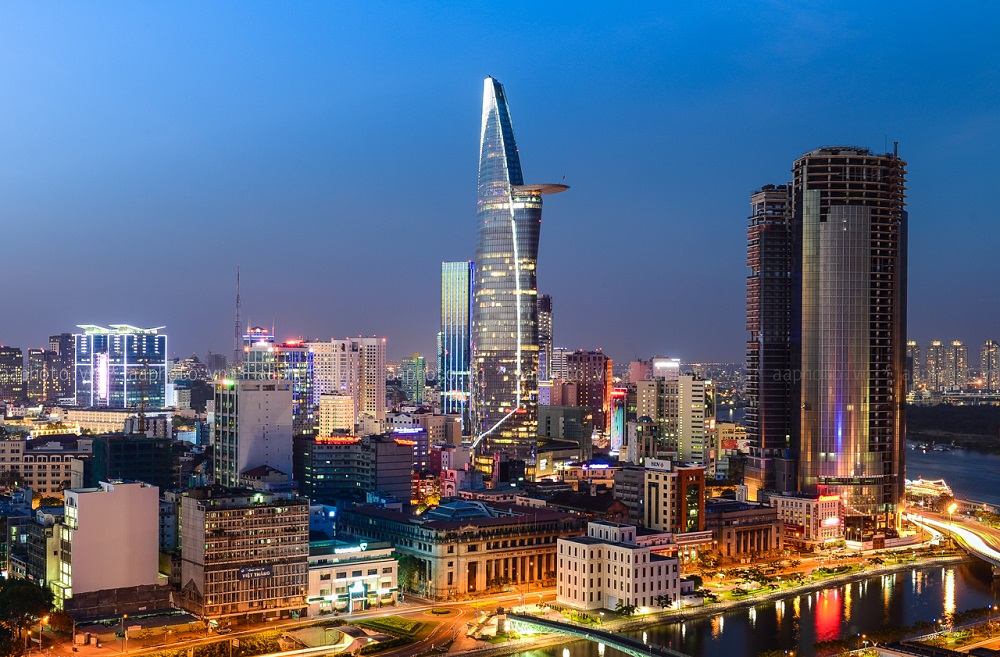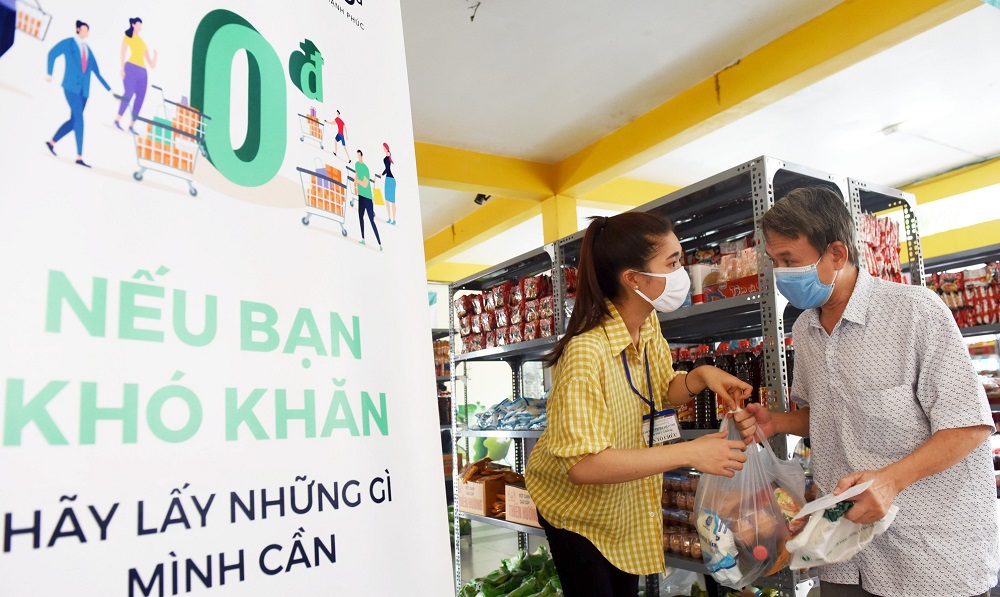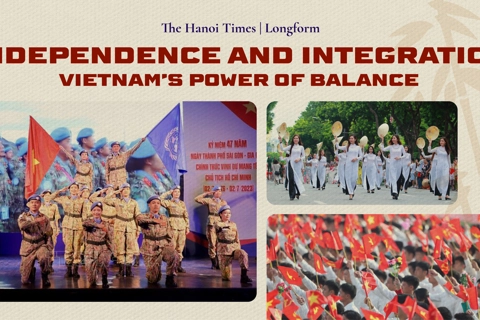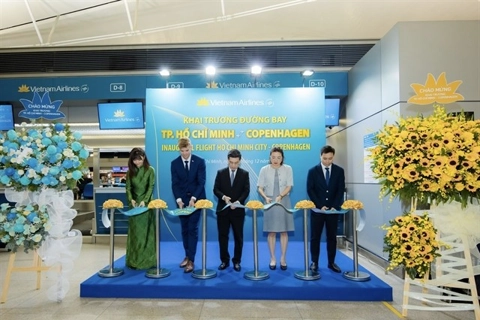Ho Chi Minh City’s GDP likely to expand 4.9% this year
The city is flexible in imposing large-scale restrictions but still maintains production amid the partial lockdown.
Ho Chi Minh City’s gross regional domestic product (GRDP) was projected to increase by 5.02% in the first three quarters and by 4.9% for 2021 if the pandemic is brought under control in August.
| Part of Ho Chi Minh City. Photo: Baoxaydung |
The growth forecast has been released by the Ho Chi Minh City Institute for Development Studies (HIDS).
For this year, the city set a budget collection of VND364.89 trillion (US$15.86 billion), accounting for 24.79% of Vietnam’s State revenue forecasts.
Chairman of the Ho Chi Minh City People’s Committee Nguyen Thanh Phong said the local authorities try to maintain production while imposing partial lockdown that is in line with the government’s twin goal of containing the pandemic and developing the economy.
Accordingly, the municipal People’s Council in June approved economic plans, including allowance to anti-pandemic workforce and welfare to vulnerable groups. The move is regarded as a “factor contributing to recovering the production and stabilizing the labor market.”
In 2021, Ho Chi Minh City (HCMC) will also pay attention to public investment by allocating capital for major projects like Tham Luong – Ben Cat – Nuoc Len channel sanitation, An Phu junction, National Road No.50 expansion, Metro Line No.1, No.2, among others.
To make the goals attainable, the municipal Department of Planning and Investment was asked to speed up the capital disbursement of public projects together with tackling barriers at non-State projects.
Meanwhile, the city’s State Treasury, the Department of Finance, the Customs Department, and the Taxation Department need to facilitate the operation of businesses by extending tax payment deadlines and land rent for 2021.
In the first half of this year, the city posted a growth rate of 5.46% in the GRDP, an increase of 7.3% in the retail sales and services, a rise of 20.7% in the state collection, and the index of industrial production (IIP) growth of 5.9%.
| A zero-dong supermarket for the poor in Ho Chi Minh City on July 13. Photo: Duyen Phan/Tuoi Tre |
How possible?
According to Truong Tien Dung, deputy head of the Food and Foodstuff Association of HCMC, local businesses, mostly those working in the tourism and services will face challenges caused by the months-long pandemic.
But manufacturing enterprises still strive to maintain supply chains and the ability to promote exports under free trade agreements (FTAs).
“In order to realize the “dual goal”, the government and the city need to have more realistic support to businesses, mostly by trimming off administrative procedures,” Dung told Vietnam News Agency.
Associate Prof. Tran Hoang Nga, head of the HIDS, said the local authority needs to settle land-related issues and cut administrative procedures as well as boost the capital disbursement for public projects namely Thu Thiem No.2 Bridge, Ring Road No.2, No.3.
In addition, businesses should take advantage of FTAs while restructuring themselves to serve the domestic market, being active in finding raw materials supply, and in connecting with the world.
A number of measures supporting businesses and laborers together with accelerated vaccination would be cited as factors fueling optimism about the future.
Since HCMC has imposed the partial lockdown on July 9, local experts have warned the city’s authorities of the impact on vulnerable groups.
Dr. Nguyen Thu Anh, country director of Australia-based Woolcock Institute of Medical Research, stressed the need to have a specific plan of financial support for residents affected by the lockdown. The municipal government should distribute food to vulnerable groups twice a week to ensure sufficient supply and safety for residents themselves.
“If the Government cannot guarantee the minimum support, it would neither be able to force residents to follow them nor handle this pandemic,” the health professional said.
In reality, HCMC started disbursing the financial package worth VND886 billion (US$38.52 million) from July 12 to vulnerable people who are self-employed laborers, lottery sellers, and street vendors, among others.
Regarding the supply of essential goods, Chairman Nguyen Thanh Phong affirmed sufficient reserves. Accordingly, it has prepared 120,000 tons of food, tripling the demand, which will be distributed through online networks and chains of supermarkets, convenience stores, wet markets, and shops citywide.













